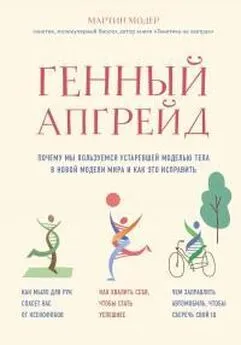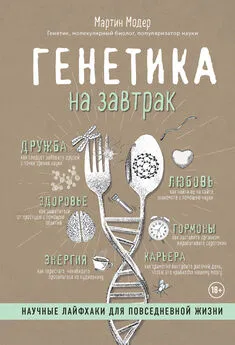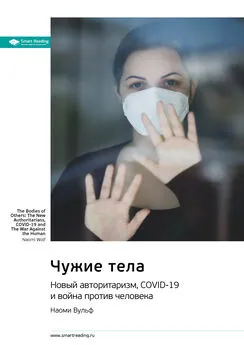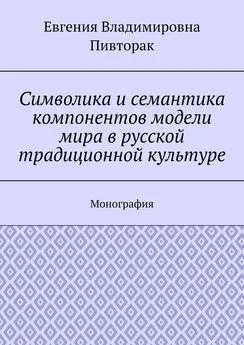Мартин Модер - Генный апгрейд. Почему мы пользуемся устаревшей моделью тела в новой модели мира и как это исправить
- Название:Генный апгрейд. Почему мы пользуемся устаревшей моделью тела в новой модели мира и как это исправить
- Автор:
- Жанр:
- Издательство:ООО «ЛитРес», www.litres.ru
- Год:2019
- ISBN:нет данных
- Рейтинг:
- Избранное:Добавить в избранное
-
Отзывы:
-
Ваша оценка:
Мартин Модер - Генный апгрейд. Почему мы пользуемся устаревшей моделью тела в новой модели мира и как это исправить краткое содержание
Генный апгрейд. Почему мы пользуемся устаревшей моделью тела в новой модели мира и как это исправить - читать онлайн бесплатно ознакомительный отрывок
Интервал:
Закладка:
Тестостерон – недопонятый гормон
171. Attrill, M. J., Gresty, K. A., Hill, R. A. & Barton, R. A., Red shirt colour is associated with long-term team success in English football. J. Sports Sci. 26, 577–582 (2008).
172. Buss, D. M. & Barnes, M., Preferences in human mate selection. J. Pers. Soc. Psychol. 50, 559–570 (1986).
173. Dabbs, J. M., Carr, T. S., Frady, R. L. & Riad, J. K., Testosterone, crime, and misbehavior among 692 male prison inmates. Personal. Individ. Differ. 18, 627–633 (1995).
174. Eisenegger, C., Haushofer, J. & Fehr, E., The role of testosterone in social interaction. Trends Cogn. Sci. 15, 263–271 (2011).
175. Eisenegger, C., Naef, M., Snozzi, R., Heinrichs, M. & Fehr, E., Prejudice and truth about the effect of testosterone on human bargaining behaviour. Nature 463, 356–359 (2010).
176. Farrelly, D., Slater, R., Elliott, H. R., Walden, H. R. & Wetherell, M. A., Competitors who choose to be red have higher testosterone levels. Psychol. Sci. 24, 2122–2124 (2013).
177. Ferrucci, L. et al., Low testosterone levels and the risk of anemia in older men and women. Arch. Intern. Med. 166, 1380–1388 (2006).
178. Gottschall, J., Martin, J., Quish, H. & Rea, J., Sex differences in mate choice criteria are reflected in folktales from around the world and in historical European literature. Evol. Hum. Behav. 25, 102–112 (2004).
179. Hill, R. A. & Barton, R. A., Psychology: Red enhances human performance in contests. Nature 435, 293 (2005).
180. Honk, J. van, Montoya, E. R., Bos, P. A., Vugt, M. van & Terburg, D., New evidence on testosterone and cooperation. Nature 485, E4–E5 (2012).
181. Khan, S. A., Levine, W. J., Dobson, S. D. & Kralik, J. D., Red signals dominance in male rhesus macaques. Psychol. Sci. 22, 1001–1003 (2011).
182. Miller, S. L., Maner, J. K. & McNulty, J. K., Adaptive attunement to the sex of individuals at a competition: the ratio of opposite-to same-sex individuals correlates with changes in competitors’ testosterone levels. Evol. Hum. Behav. 33, 57–63 (2012).
183. Montoya, P., Campos, J. J. & Schandry, R., See red? Turn pale? Unveiling emotions through cardiovascular and hemodynamic changes. Span. J. Psychol. 8, 79–85 (2005).
184. Nave, G. et al. Single-dose testosterone administration increases men’s preference for status goods. Nat. Commun. 9, 2433 (2018).
185. Saad, G. & Vongas, J. G. The effect of conspicuous consumption on men’s testosterone levels. Organ. Behav. Hum. Decis. Process. 110, 80–92 (2009).
186. Stanton, S. J. The role of testosterone and estrogen in consumer behavior and social & economic decision making: A review. Horm. Behav. 92, 155–163 (2017).
187. van der Meij, L., Buunk, A. P., van de Sande, J. P. & Salvador, A., The presence of a woman increases testosterone in aggressive dominant men. Horm. Behav. 54, 640–644 (2008).
188. Vongas, J. G. & Al Hajj, R., The effects of competition and implicit power motive on men’s testosterone, emotion recognition, and aggression. Horm. Behav. 92, 57–71 (2017).
189. Wibral, M., Dohmen, T., Klingmüller, D., Weber, B. & Falk, A., Testosterone administration reduces lying in men. PloS One 7, e46774 (2012).
190. Wiedemann, D., Burt, D. M., Hill, R. A. & Barton, R. A., Red clothing increases perceived dominance, aggression and anger. Biol. Lett. 11, 20150166 (2015).
191. Zilioli, S. & Bird, B. M., Functional significance of men’s testosterone reactivity to social stimuli. Front. Neuroendocrinol. 47, 1–18 (2017).
Голубой свет на пути к боссу
192. Anderson, C. & Brown, C. E., The functions and dysfunctions of hierarchy. Res. Organ. Behav. 30, 55–89 (2010).
193. Drews, C., The Concept and Definition of Dominance in Animal Behaviour. Behaviour 125, 283–313 (1993).
194. Gesquiere, L. R. et al. Life at the Top: Rank and Stress in Wild Male Baboons. Science 333, 357–360 (2011).
195. Lange, L., Zedler, B., Verhoff, M. A. & Parzeller, M., Love Death – A Retrospective and Prospective Follow-Up Mortality Study Over 45 Years. J. Sex. Med. 14, 1226–1231 (2017).
196. Lawson, G. M., Duda, J. T., Avants, B. B., Wu, J. & Farah, M. J., Associations between Children’s Socioeconomic Status and Prefrontal Cortical Thickness. Dev. Sci. 16, 641–652 (2013).
197. Zhou, T. et al., History of winning remodels thalamo-PFC circuit to reinforce social dominance. Science 357, 162–168 (2017).
Стремление к счастью
198. Ahlskog, J. E., Pathological behaviors provoked by dopamine agonist therapy of Parkinson’s disease. Physiol. Behav. 104, 168–172 (2011).
199. Boylan, L. S. & Kosti´c, V. S., Don’t ask, don’t tell: Impulse control disorders in PD. Neurology 91, 107–108 (2018).
200. Sapolsky, R. M. Behave: The Biology of Humans at Our Best and Worst (Penguin, 2017).
Что делает счастливым?
201. Asai, A. et al., HappyDB: A Corpus of 100,00 °Crowdsourced Happy Moments. ArXiv180107746 Cs (2018).
202. Brickman, P., Coates, D. & Janoff-Bulman, R., Lottery winners and accident victims: is happiness relative? J. Pers. Soc. Psychol. 36, 917–927 (1978).
203. Lykken, D. & Tellegen, A., Happiness Is a Stochastic Phenomenon. Psychol. Sci. 7, 186–189 (1996).
204. Okbay, A. et al., Genetic variants associated with subjective well-being, depressive symptoms, and neuroticism identified through genome-wide analyses. Nat. Genet. 48, 624–633 (2016).
205. Stetka, B., Money Can Buy Happiness If You Spend It Wisely. Scientific American doi: 10.1038/scientificamericanmind0715-9a
206. Whillans, A. V., Dunn, E. W., Smeets, P., Bekkers, R. & Norton, M. I., Buying time promotes happiness. Proc. Natl. Acad. Sci. U. S. A. 114, 8523–8527 (2017).
Осмысленние счастья
207. Boyle, P. A. et al., Effect of purpose in life on the relation between Alzheimer disease pathologic changes on cognitive function in advanced age. Arch. Gen. Psychiatry 69, 499–505 (2012).
208. Boyle, P. A., Barnes, L. L., Buchman, A. S. & Bennett, D. A., Purpose in life is associated with mortality among community-dwelling older persons. Psychosom. Med. 71, 574–579 (2009).
209. Boyle, P. A., Buchman, A. S. & Bennett, D. A., Purpose in life is associated with a reduced risk of incident disability among community-dwelling older persons. Am. J. Geriatr. Psychiatry Off. J. Am. Assoc. Geriatr. Psychiatry 18, 1093–1102 (2010).
210. Boyle, P. A., Buchman, A. S., Barnes, L. L. & Bennett, D. A., Effect of a purpose in life on risk of incident Alzheimer disease and mild cognitive impairment in community-dwelling older persons. Arch. Gen. Psychiatry 67, 304–310 (2010).
211. Clark, A. E., Flèche, S., Layard, R., Powdthavee, N. & Ward, G., The Origins of Happiness: The Science of Well-Being over the Life Course (Princeton University Press, 2018).
212. Kim, A. & Maglio, S. J., Vanishing time in the pursuit of happiness. Psychon. Bull. Rev. 25, 1337–1342 (2018).
213. Kim, E. S., Sun, J. K., Park, N. & Peterson, C., Purpose in life and reduced incidence of stroke in older adults: ›The Health and Retirement Study‹. J. Psychosom. Res. 74, 427–432 (2013).
214. Krause, N., Meaning in life and mortality. J. Gerontol. B. Psychol. Sci. Soc. Sci. 64, 517–527 (2009).
215. Turner, A. D., Smith, C. E. & Ong, J. C., Is purpose in life associated with less sleep disturbance in older adults? Sleep Sci. Pract. 1, 14 (2017).
ГЛАВА 4. Что же будет дальше?
216. Aktive Minderheit: Viele Hass-Kommentare von wenig Nutzern. ZEIT ONLINE, https://www.zeit.de/news/2018-02/20/viele-hass-kommentare-von-wenignutzern-180220-99-165168. (Aufgerufen am 12. Oktober 2018).
217. Blonigen, D. M., Hicks, B. M., Krueger, R. F., Patrick, C. J. & Iacono, W. G., Psychopathic personality traits: heritability and genetic overlap with internalizing and externalizing psychopathology. Psychol. Med. 35, 637–648 (2005).
218. Falk, O. et al., The 1 % of the population accountable for 63 % of all violent crime convictions. Soc. Psychiatry Psychiatr. Epidemiol. 49, 559–571 (2014).
219. Kiehl, K. A. & Hoffman, M. B., The Criminal Psychopath: History, Neuroscience, Treatment, And ECONOMICS. Jurimetrics 51, 355–397 (2011).
Опасная биология
220. Dreu, C. K. W. D. et al., The Neuropeptide Oxytocin Regulates Parochial Altruism in Intergroup Conflict Among Humans. Science 328, 1408–1411 (2010).
221. Jackson, R. J. et al., Expression of Mouse Interleukin-4 by a Recombinant Ectromelia Virus Suppresses Cytolytic Lymphocyte Responses and Overcomes Genetic Resistance to Mousepox. J. Virol. 75, 1205–1210 (2001).
222. Noyce, R. S., Lederman, S. & Evans, D. H., Construction of an infectious horsepox virus vaccine from chemically synthesized DNA fragments. PLOS ONE 13, e0188453 (2018).
223. Savulescu, J., Human liberation: removing biological and psychological barriers to freedom. Monash Bioeth. Rev. 29, 04.1-18 (2010). TEDx Talks. Pills that improve morality: Julian Savulescu at TEDxBarcelona (2013).
Этическая оптимизация
224. Ford, B. J., Secret Weapons: Technology, Science and the Race to Win World War II (Bloomsbury USA, 2011).
225. Konrad-Bindl, D. S., Gresser, U. & Richartz, B. M., Changes in behavior as side effects in methylphenidate treatment: review of the literature. Neuropsychiatr. Dis. Treat. 12, 2635–2647 (2016).
226. Terbeck, S. et al., Propranolol reduces implicit negative racial bias. Psychopharmacology (Berl.) 222, 419–424 (2012).
Стать более эмпатичными
227. Ayan, S., Sozialpsychologie: Schattenseiten des Mitgefühls. Gehirn & Geist 9 (2017).
228. Bloom, P., Against Empathy: The Case for Rational Compassion (HarperCollins, 2016).
229. Warrier, V. et al., Genome-wide analyses of self-reported empathy: correlations with autism, schizophrenia, and anorexia nervosa. Transl. Psychiatry 8, 35 (2018).
Криминальный накал
230. Anderson, C. A., Heat and Violence. Curr. Dir. Psychol. Sci. 10, 33–38 (2001).
231. Baron, R. A. & Bell, P. A., Aggression and heat: mediating effects of prior provocation and exposure to an aggressive model. J. Pers. Soc. Psychol. 31, 825–832 (1975).
232. Kenrick, D. T. & Macfarlane, S. W., Ambient temperature and horn honking: A Field Study of the Heat/Aggression Relationship. Environ. Behav. 18, 179–191 (1986).
233. Ranson, M., Crime, weather, and climate change. J. Environ. Econ. Manag. 67, 274–302 (2014).
234. Rinderu, M. I., Bushman, B. J. & Van Lange, P. A. Climate, aggression, and violence (CLASH): a cultural-evolutionary approach. Curr. Opin. Psychol. 19, 113–118 (2018).
235. Vrij, A., Steen, J. V. D. & Koppelaar, L., Aggression of police officers as a function of tem- perature: An experiment with the fire arms training system. J. Community Appl. Soc. Psychol. 4, 365–370 (1994).
Ешьте на здоровье
236. Danziger, S., Levav, J. & Avnaim-Pesso, L., Extraneous factors in judicial decisions. Proc. Natl. Acad. Sci. U. S. A. 108, 6889–6892 (2011).
Бездумный надзор и мир во всем мире
237. Bateson, M., Callow, L., Holmes, J. R., Roche, M. L. R. & Nettle, D., Do Images of ›Watching Eyes‹ Induce Behaviour That Is More Pro-Social or More Normative? A Field Experiment on Littering. PLOS ONE 8, e82055 (2013).
Читать дальшеИнтервал:
Закладка:








